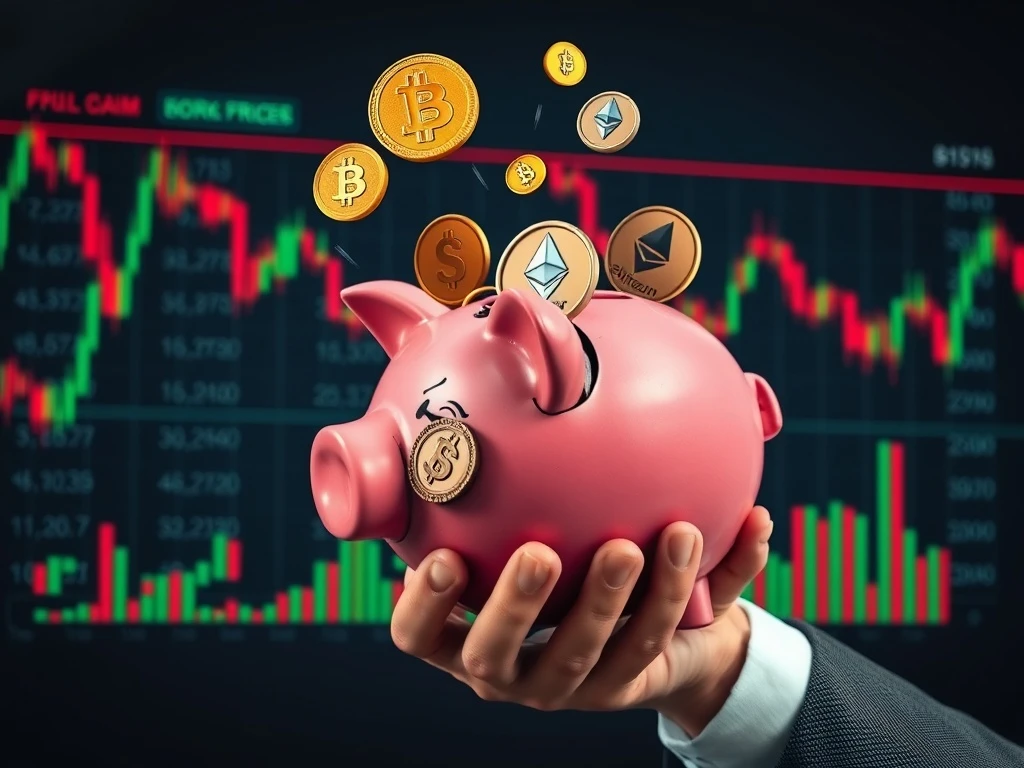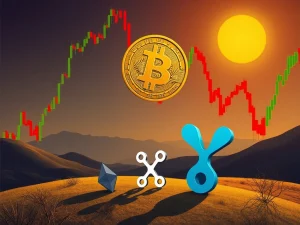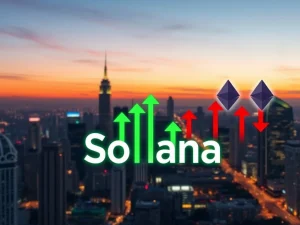FTX Creditor Recovery: Shocking Reality Reveals Payouts Plummet to 9%

For thousands of individuals and institutions, the collapse of FTX in 2022 brought financial devastation. Many creditors now anticipate some form of restitution. However, the true FTX creditor recovery picture is far more complex than initial reports suggest. A recent analysis indicates that actual payouts, when measured in cryptocurrencies like Bitcoin, Ether, and Solana, could be dramatically lower than their fiat equivalents. This stark reality challenges the narrative of a robust recovery, prompting a closer look at the figures.
The Stark Reality of FTX Creditor Recovery Rates
FTX creditor representative Sunil recently highlighted a concerning disparity. He suggests that creditors may receive only a fraction of their expected payouts. This adjustment accounts for the significant appreciation of major cryptocurrencies since FTX’s collapse. Sunil’s analysis, shared on X, estimates the real crypto recovery rates for FTX creditors range between 9% and 46%. This figure could even be lower due to the substantial surge in Bitcoin (BTC), Ether (ETH), and Solana (SOL) prices.
“FTX creditors are not whole,” Sunil stated. He emphasized that the proposed 143% fiat repayment does not reflect the actual losses in crypto-denominated terms. For instance, Bitcoin’s petition price was $16,871. However, its current market value exceeds $110,000. Therefore, a 143% fiat payout translates to roughly 22% in real BTC value. This significant difference underscores the impact of market movements on creditor restitution.
Understanding the Bitcoin Price Surge and its Impact
The dramatic Bitcoin price surge since late 2022 profoundly impacts creditor expectations. At the time of FTX’s bankruptcy, Bitcoin traded at a fraction of its current price. Creditors who held BTC on the exchange lost an asset that has since multiplied in value. While the bankruptcy estate is working to return fiat currency, the opportunity cost for these crypto holders is immense. This situation creates a feeling of injustice among those who witnessed their crypto assets appreciate significantly while their funds remained locked.
Consider the example: if a creditor had 1 BTC worth $16,871 at the petition date, a 143% fiat recovery means they receive approximately $24,130. However, if that 1 BTC is now worth $110,000, their ‘recovery’ represents only about 22% of the asset’s current market value. This calculation reveals the true extent of the financial setback for crypto investors.
Ether and Solana Value: Discrepancies in Recovery
The same pattern applies to other major altcoins, including Ether and Solana. The Ether and Solana value at the time of FTX’s collapse was considerably lower than today’s prices. Sunil’s data illustrates this clearly. A 143% recovery for Ether translates to 46% in real terms. Similarly, Solana’s recovery amounts to a mere 12% in real value. These figures highlight the widespread nature of the problem, affecting a broad spectrum of crypto assets held on the exchange.
Many creditors had diversified portfolios. Consequently, they are experiencing similar discrepancies across various cryptocurrencies. The gap between fiat recovery and real crypto value continues to widen with ongoing market rallies. This situation fuels frustration within the creditor community, who feel their losses are not being fully acknowledged in crypto terms.
Beyond Fiat: Exploring Additional Crypto Recovery Rates
Despite the challenges, some avenues for additional recovery exist. Sunil also pointed to the possibility of “extra recovery” through airdrops. These airdrops originate from external projects specifically targeting FTX creditors. He cited Paradex as one such initiative. Sunil noted that “FTX creditors are the most valuable asset and attractive for projects.” This perspective suggests that the creditor base itself holds significant value for new crypto ventures looking to bootstrap their communities.
These potential airdrops could offer a silver lining for some creditors. They represent a chance to recoup a larger portion of their original crypto holdings. However, these opportunities are often speculative and depend on the success of the issuing projects. Therefore, they do not guarantee full restitution.
Milestones in FTX Creditor Payments
The FTX Recovery Trust has made several significant steps towards repayment. The first round of FTX creditor payments occurred on February 18. This distribution targeted recipients with claims under $50,000 and totaled $1.2 billion. Subsequently, in May, the FTX Recovery Trust launched its second, larger payout. This round disbursed $5 billion to eligible creditors.
These payments covered multiple claim categories:
- Dotcom Customer Entitlement Claims: 72%
- US Customer Entitlement Claims: 54%
- Convenience Claims: 120%
Furthermore, General Unsecured and Digital Asset Loan Claims are set to receive 61% distributions. Funds for these categories are expected to reach recipients via Kraken and BitGo within one to two business days. While these payments are substantial in fiat terms, the underlying concern about real crypto value persists.
Sam Bankman-Fried Appeal: The Legal Battle Continues
The legal saga surrounding FTX’s collapse also continues. Former FTX CEO Sam Bankman-Fried is currently serving a 25-year prison sentence. He was convicted of fraud and conspiracy charges. However, his legal team is actively pursuing an appeal. Bankman-Fried is scheduled to appear before the US Court of Appeals for the Second Circuit on November 4.
This hearing marks the next stage in his effort to overturn his conviction. His legal team filed the appeal in September 2024. They argue that Bankman-Fried was “never presumed innocent.” They also contend that prosecutors misrepresented the handling of FTX customer funds. The appeal challenges his 2023 conviction on seven felony counts. The outcome of this appeal could have further implications for the broader FTX recovery process, though its direct impact on current creditor payouts remains uncertain.
Conclusion: A Long Road Ahead for FTX Creditors
The journey for FTX creditors remains challenging. While significant fiat payments are underway, the real FTX creditor recovery, when measured against the surging value of cryptocurrencies like Bitcoin, Ether, and Solana, presents a sobering picture. Creditors face a complex landscape where legal battles, market dynamics, and potential supplementary airdrops all play a role. The community continues to watch these developments closely, hoping for the most equitable resolution possible in the wake of one of crypto’s largest bankruptcies.








